The Istanbul Archaeological Museums are a collection of museums in Istanbul that are divided into three sections: the Archaeology Museum, the Museum of the Ancient Orient, and the Tiled Kiosk Museum. The palace holdings were developed during the late 19th century by museum director, master painter (“The Tortoise Trainer”/Pera Museum) and archaeologist Osman Hamdi Bey, and are housed in these three independent primary components in the same garden. The Istanbul Archaeological Museum, the first regular museum in the Ottoman Empire’s and Turkey’s history, houses over a million items from many civilizations brought from the imperial realms.
History of Istanbul Archaeology Museums
The enthusiasm in gathering historical artefacts stretches back to Mehmet the Conqueror’s reign, but the foundation of Istanbul Archaeological Museums as Müze-i Hümayun in 1869 marks the institutional beginnings of museums (Imperial Museum). The Istanbul Archaeological Museum’s foundation is Müze-i Humayun, which houses the archaeological works acquired in the Hagia Irene Church. Because Hagia Irene proved insufficient, the Tiled Kiosk, built during Mehmet the Conqueror’s reign, was converted into a museum. In 1880, the Tiled Kiosk, which is presently managed by the Istanbul Archaeological Museum, was renovated and reopened its doors.
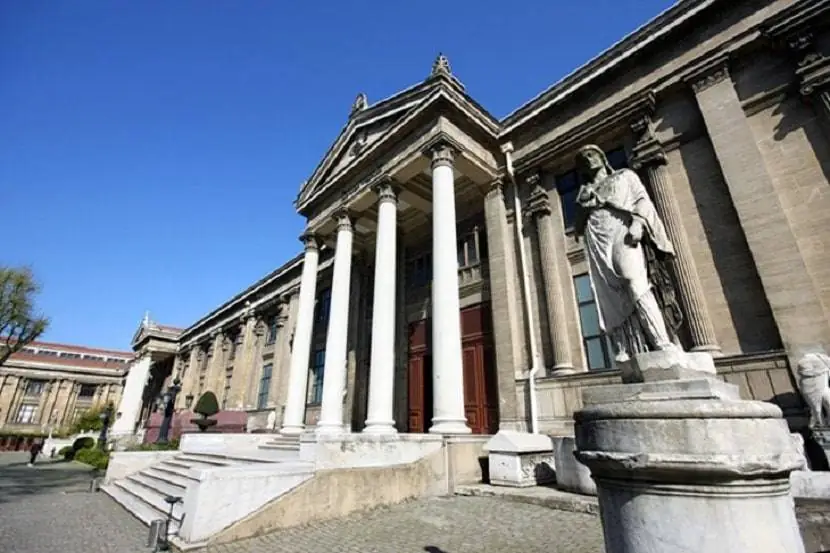
The appointment of Osman Hamdi Bey (Biography) as museum director in 1881 was a watershed moment in Turkish museology. Osman Hamdi Bey excavated in Mount Nemrud, Myrina, Kyme, other Alolia Necropolises, and Lagina Hekate Temple, and as a consequence of excavations he conducted in Sayda (Sidon) between 1887 and 18888, he reached the necropolis of King Sidon and brought back to Istanbul with many sarcophagi, including Alexander the Great’s famous sarcophagi.
The Tiled Kiosk (1472 CE) is the earliest structure in the Istanbul Archaeological Museum complex. One of Istanbul’s oldest instances of Ottoman civil architecture is the Tiled Kiosk Museum, which today houses a collection of Turkish tiles and ceramics.
The Archaeological Museum is one of the few structures in the world built as a museum during that historical period. It is one of Istanbul’s most stunning and magnificent examples of neo-classical architecture. The inscription “Asar- Atika Müzesi” is written in Ottoman Turkish on the pediments of the museum’s entrance gates (Museum of Antiquities). Sultan Abdulhamid II is represented by the tughra on the inscription.
The Tomb of Iskender (Alexander Sarcophagus), Tomb of “Crying Women” (Sarcophagus of the Mourning Women), Lycia Tomb, and Tabnit Tomb, which were transferred to Istanbul from the Sidon King Necropolis excavations conducted by Osman Hamdi Bey between 1887 and 1888, required a new museum structure. The Classical Building of the Istanbul Archeological Museum, created by the renowned architect Alexandre Vallaury, was inaugurated on June 13th, 1891, directly across from The Tiled Kiosk.
♦ 7 Days Turkey Tour Package – Highlights of Turkey
What to see in Istanbul Archaeology Museums
As stated above, the Istanbul Archaeological Museums are a collection of museums in Istanbul that are divided into three sections: the Archaeology Museum, the Museum of the Ancient Orient, and the Tiled Kiosk Museum, it will be great idea to know what these antique pieces of elegance hold for the tourists.
Archaeology Museum
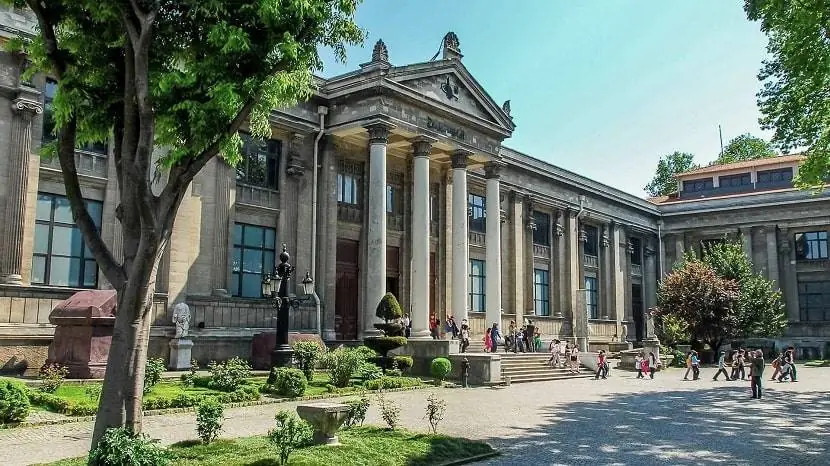
This massive neoclassical edifice, on the opposite side of the column-filled courtyard from the Museum of the Ancient Orient, was undergoing renovations when we visited. It has a large collection of classical statues and sarcophagi, as well as displays on Istanbul’s ancient, Byzantine, and Ottoman histories.
Sarcophagi from places such as the Royal Necropolis of Sidon (Side in modern-day Lebanon), found in 1887 by Osman Hamdi Bey, are among the museum’s most valuable items. Don’t miss the magnificent Alexander and Mourning Women Sarcophagus.
Museum of the Ancient Orient
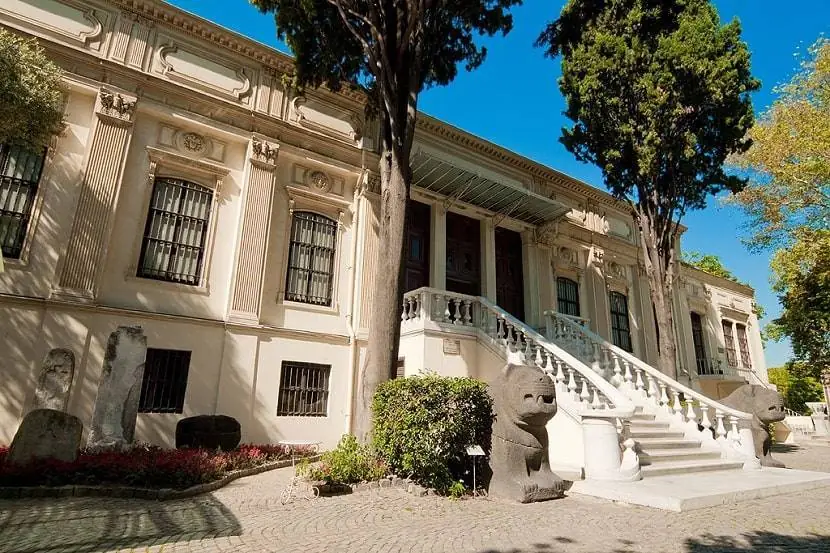
This 1883 structure, which is immediately on the left after entering the complex, has a collection of pre-Islamic artefacts collected from across the Ottoman Empire. A massive blue-and-yellow glazed-brick panel that originally flanked the processional route and the Ishtar gate of ancient Babylon and an 8th-century BC Hittite moulding of a rock carving representing the storm god Tarhunza are among the highlights. Real and mythical animals like as lions, dragons, and bulls are shown in the latter.
The Tiled Kiosk Museum
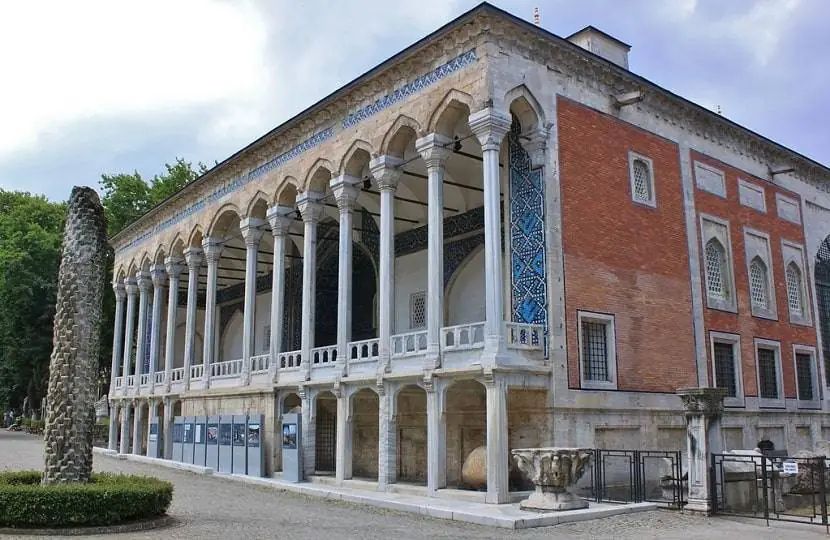
From 1875 to 1891, it served as the Imperial Museum. It was opened in 1953 as the Fatih Museum, which featured Turkish and Islamic art. Because of its location, it was given to the Istanbul Archeological Museum in 1981. The building has a single storey in the front and two floors in the back. At the entryway, there is a marble arcade with 14 columns. Mosaic tiles are used to embellish the entrance. Diverse tiles and pottery from the Selcuk and Ottoman periods are on show in the kiosk’s six chambers and centre salon. The museum and its storehouse house a total of 2000 works.
How to Get to Istanbul Archaeology Museums
The Archaeology Museum is situated just to the right of the Gülhane Park entrance gate on the road leading up to Topkap Palace. The most practical way to get to Sultanahmet is via Bagcilar-Kabatas tram (T1 line).
Istanbul Archaeology Museums Map
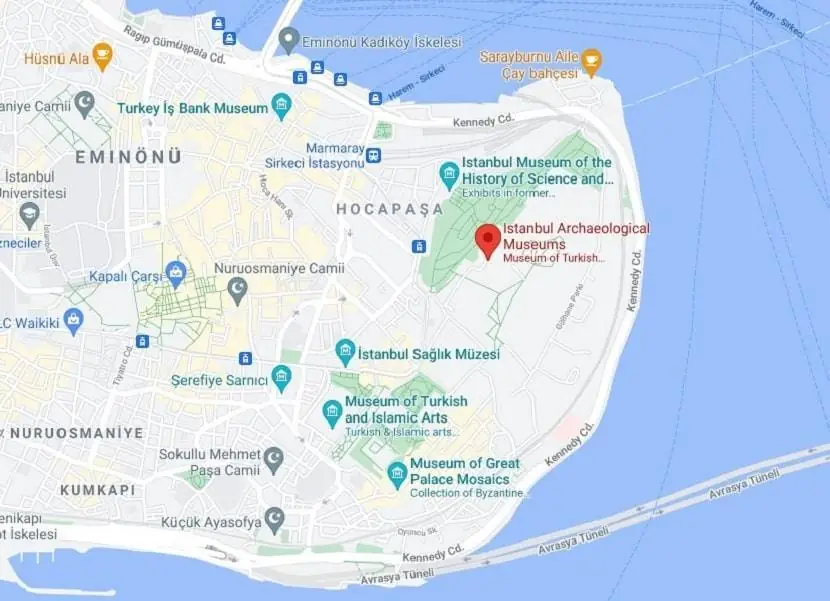
Istanbul Archaeology Museums Visiting Information
Visiting Hours: Every day except Mondays between 09:30-19:00 (from 01 April to 01 October), 09:00-17:30 (from 01 October to 01 April).
Ticket Price: The ticket booths close one hour before the museum closes. 60 TL at the location’s ticket window.

